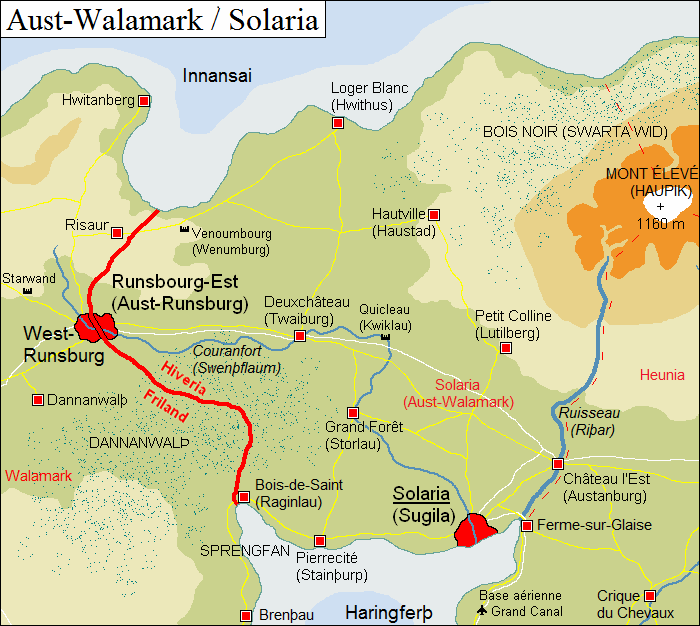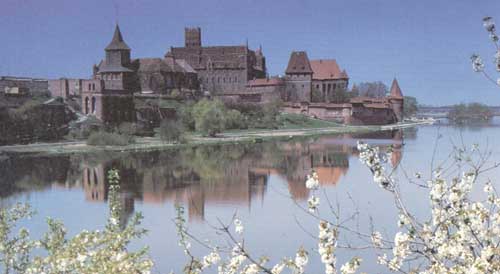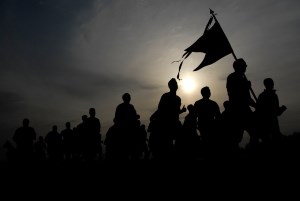  East WalamarkEast Walamark (Fri: Aust-Walamark / Hiv: Solaria) is a disputed territory that is claimed by both Friland and Hiveria. Since 1881 the area has been under de facto Hiverian rule, before that it was part of the Frilandic shire of Walamark, whose border once stretched to the Riþar (Ruisseau) river.  History The first Hiverian invasion of Walamark took place during the Second Frilandic-Hiverian War (1142). The initially successful advance was stopped by an uprising in East Walamark. In the ensuing Battle of Storlau (nowadays Grand Forêt), Frilandic reinforcements achieved an unexpected victory over the much stronger invasion force. As a result, Walamark remained entirely in Frilandic hands. In 1386 Hiveria succeeded in annexing all of Walamark, thanks to betrayal by Fulkmer Karskung Þeudmanssun, duke of Walamark, and with the support of France and England. During the Third Frilandic-Hiverian War (1448), Walamark was recaptured by Friland. During the Fourth Frilandic-Hiverian War (1881) major devastations were caused in East Walamark. The British Empire intervened and forced a peace uti possidetis ("as is in possession"); the front line, which at that time ran straight through Walamark and the city of Runsburg, thus became the new border between Friland and Hiveria. East Walamark was separated from the rest of Walamark and became a Hiverian province called Solaria. The new border hasn't changed since then and is one of the main reasons for the hostile relationship between Friland and Hiveria, who both have a claim on all of Walamark: Friland based on historical and cultural ties and Hiveria based on the annexation treaty of 1386, which Friland doesn't recognize. In 1964 a demonstration in Deuxchâteau (Twaiburg) against the occupation was violently crushed by the Hiverian authorities, killing nearly two hundred people. During the Fifth Frilandic-Hiverian War (2009), East Walamark was briefly recaptured by Friland, which, however, had to leave the area to Hiveria again following heavy international pressure and a fraudulent referendum. From 2012 to 2014 UN observers were active in East Walamark following several major violent incidents between ethnic Frilanders and Hiverian settlers.  Demographics
DemographicsFew reliable figures are available on the demographics of East Walamark because Friland and Hiveria use different statistics for political reasons. Moreover, a demographic battle is raging, in which migration, birth rates and the mutual bullying away of population groups often make the figures fluctuate. According to the most accurate estimates, East Walamark has 784,760 inhabitants, of which 580,723 are Frilanders (74% of the population) and 204,037 are Hiverians (26% of the population). The population is divided among the following municipalities:
The native population of the area almost completely identifies as Frilandic. Among those who identify as Hiverian is a small number of ethnic Frilanders, who have registered as Hiverian for political or opportunistic reasons. The majority of the Hiverian population in East Walamark, however, consists of settlers, who are encouraged by the government to settle there in the hope of a demographic shift in favour of Hiveria. Immigrants are also preferably housed in East Walamark and then counted as Hiverian, the majority of them are from North Africa and the Middle East. The most important religion in East Walamark is Christianity (43%, of which 36% Catholic, 5% Protestant and 2% other denominations). This is followed by atheism (30%), Ferna Sed (19%) and Islam (8%). Remarkably, only a quarter of the ethnic Frilanders are supporters of Ferna Sed, while in Friland itself this is almost half. This is partly due to the fact that the population of Walamark (including the Frilandic part) has a relatively high number of Christians through centuries of Hiverian conversion attempts, but also because of the suppression of the Ferna Sed faith in East Walamark. As a result of which, many followers choose to profess their faith in secrecy and register as atheist or Christian to prevent problems. Politics and administration East Walamark is ruled by Hiveria as the province of Solaria, named after the provincial capital of the same name, which is called Sugila in Frilandic. In the city of Solaria the provincial parliament (Conseil Provincial) is located, which is led by the governor. The province is officially an autonomous region, but the degree of autonomy has fluctuated quite a bit since the beginning of the occupation. Also, the Frilandic majority often has more rights on paper than in practice. The official currency is the Hiverian franc, but the Frilandic part of the population mainly uses the Frilandic skat. There is also a large shadow economy in order to pay as little Hiverian taxes as possible and to be able to finance the separation movement unseen. Most ethnic Frilanders in East Walamark have both Frilandic and Hiverian nationalities; the Frilandic is obtained automatically when both parents already own it and the Hiverian by birth on Hiverian territory. There is a Frilandic Consulate General in the provincial capital of Solaria, where one can go for help and support. Conflicts In addition to the fact that East Walamark is claimed by two countries, there are also conflicts in the following areas: Separatism and loyalism The Frilandic majority in East Walamark regularly resists to the, in their eyes, Hiverian occupation. The Hiverian minority calls for unity and against separatism. The actions of both groups range from non-violent demonstrations to armed combat.
Members of the Skadhar cannot be recognized as such because they do not wear uniforms or other identifiers. They use regular civilian vehicles and are generally lightly armed, although they also have Kalashnikovs, explosives and portable anti-aircraft and anti-tank missiles. Many of their weapons have been obtained on the black market, captured from the Hiverian army or, allegedly, supplied by Friland. The Skadhar is involved in sabotage, revenge actions and attacks on the "occupation force" (the Hiverian army and police). Hiverian civilians are spared, provided they do not use violence against the Frilandic population. The actions of the Skadhar are so effective that in many parts of East Walamark Hiveria can hardly exercise its authority.  Château l'Est (Austanburg) Tourism Visiting East Walamark is discouraged in many countries due to the tensions in the area and the increased risk of violence. Those who still want to go are advised to behave as neutral as possible. East Walamark can best be visited via Hiveria, so by crossing the river Ruisseau (Riþar) from the east (the province of Heunia). The security checks here are less strict than at the heavily guarded border with Friland. During your stay you can be interrogated and searched by the Hiverian police and the army. Although much of the beauty of East Walamark has been destroyed by wars and deliberate destruction of cultural heritage, certain places are definitely worth a visit: in Runsbourg-Est (Aust-Runsburg) both the wall between east and west and the shopping area in the Louisienne (Hludwigshaim) district are frequently visited places. In Petit Colline (Lutilberg) there is an open-air museum with a reconstructed hill fort, elsewhere there are the castles Château l'Est (Austanburg), Quicleau (Kwiklau) and Venoumbourg (Wenumburg) and as for natural beauty, there are the Mont Élevé (Haupik), the Bois Noir (Swarta Wid) and the beaches on the Mer Dedans (Innansai) and Grand Canal (Haringferþ).  |
